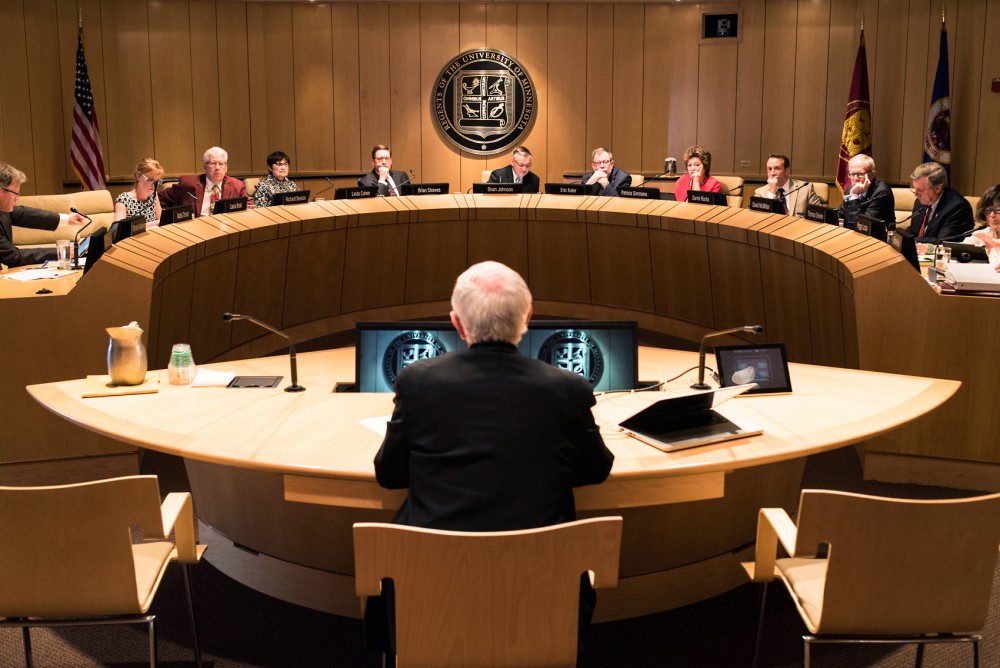The University of Minnesota Board of Regents will vote on a resolution aimed at improving retention and recruitment of underrepresented students at its February meeting.
The resolution includes five strategy points to increase undergraduate diversity on the Twin Cities campus and requires the University’s president to give an annual report on the status of the strategies. Several University surveys show gaps in graduation rates and campus satisfaction between white students and students of color.
Around 71 percent of white students graduated in four years, while around 58 percent of students of color, on average, graduated in four years in 2013, according to most recent available data from the Office of Undergraduate Education.
The resolution would direct the University president to increase recruitment efforts in Twin Cities high schools, evaluate University recruitment efforts each year, reduce four-year and six-year graduation gaps for African American and Latinx students, monitor local underrepresented groups to identify possible graduation gaps and improve campus climate for students of color.
Although enrollment has increased for students of color over the past 10 years, the Student Experience in the Research University survey results showed a “concerning difference” in student satisfaction between students of color and American Indian students and white students.
“We’re going to dial up those places where we think these underrepresented minorities are having some trouble in succeeding,” Vice Provost and Dean of Undergraduate Education Bob McMaster said.

As more University resources and attention are given to lessen the gap, McMaster said, “the better chances you’re going to have of making sure that students… are not leaving after the third or second year.”
McMaster pointed to his office’s work with multicultural campus groups — including the Rev. Dr. Martin Luther King, Jr. Program, Multicultural Center for Academic Excellence and President’s Emerging Scholars Program — as one way to reduce the disparity in graduation rates.
Regent Michael Hsu said he hopes the administration will also focus on counseling.
“If you don’t have good counseling, then it’s easy to kind of find yourself in stressful situations,” Hsu said.
McMaster said improving campus climate will help recruit more students. The SERU evaluates campus climate with questions asking students whether they feel students of their “race/ethnicity are respected on this campus” and whether campus stakeholders value diversity.
McMaster said his office has been involved in conversations about campus diversity since March 2016, when the Enrollment Management Plan was approved. Part of the plan’s goal was to increase undergraduate diversity.
“We’ve been making good progress in the recruitment and enrollment of students of color,” McMaster said.
At the December board meeting, University President Eric Kaler said passing the resolution is important for campus diversity.
“I think the need for a resolution is really an opportunity to put a clearer flag in the ground and state that this is important to us going forward,” Kaler said at the meeting.









